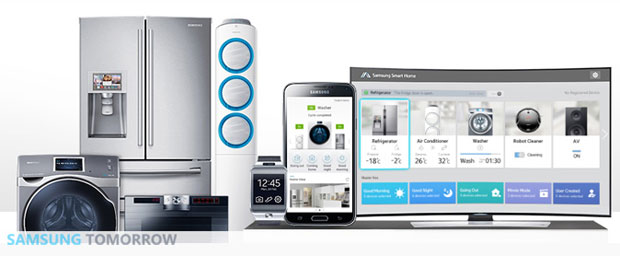The Internet of Everything (IoE) Starts With The Connected Home
2014 has seen more people talking about the Internet of Everything (IoE) than any other time to date; even individuals who never seem to have the slightest interest have had their attention drawn to the thought that they can monitor their home, access and control home appliances while they are away seems fascinating and scary at the same time. Although these types of solutions are available for businesses I believe the home is a better test bed and a bigger market for the Internet of Everthing.

Industry analysts define Internet of Everything as the intelligent connection of processes, people, data and things. I define IoE as the melting pot of everything that is connected and can be connected and home is just one of those ingredients; others areas include the infrastructure around us, buildings, our cars and even the clothes we wear.
According to Cisco IoE will create a market value of over US 14.4 trillion over the next seven to ten years, mainly driven by a combination of increase revenues and lower costs. Currently 99.4 per cent of physical objects that may one day be part of the Internet of Everything are still unconnected. Therefore, the aim of governments and businesses over the next 5-10 years is to connect everything that can be connected; these include our cars, buildings, lighting, clothing and our utilities.
For now the home seems to be getting most of the attention, which is understandable, because most homes are generic in nature big or small they all serve the same purpose. Therefore, it doesn’t matter what our profession is all our homes serve the same purpose. This makes the home a perfect test bed for IoE technologies.
Most of the world’s big telecom service providers have started offering some form of connected home solution. They have all realised that they already have the infrastructure and the customer base and with a little more investment in added services they can start seeing return in a short time. Areas such as security, energy management and entertainment have been the most popular.
AREAS OF FOCUS
Home Security: In a modern society security remains one of our main concerns and the Internet of Everything is playing a major role in alleviating some of the stress associated with home security. In the past home monitoring was only available from specialist security companies such as ADT but they technology has moved on, now with the internet we can have our own with the added benefit of being able to monitor our home visually. Service providers such as Swisscom have given their customers the option of remotely monitoring their home via a connected solution.
Smart Cities: The Internet of Everything is at the heart of all smart cities initiatives. Communication communications cost in big cities have come down so now it’s easier to integrate our lives with the environment around us. Project such as ‘Songdo’ and Living PlanIT project in Portugal are testaments to the development of the Internet of Everything on homes and communities. This is even being extended into the airports we use.
Energy Management: Over the last ten years we have seen major progress in energy management solutions, all with the benefit of internet connectivity. Cisco, Google, Microsoft and British Gas have been busy developing solutions that give home owners easy access to information about their energy use and the ability to access and control their energy appliances at home via the internet.
The use of smart metres through IoE is another way of linking our homes to the outside world. Different alliances are busy developing specifications to facilitate secure communications between our utility meters and the supplier’s infrastructure.
Home Entertainment: on-demand services via the internet have disrupted the video rental market to the point where many have moved out of the market. Unlike before we not required to take the content to our entertainment systems, now with internet access capability already built these systems they are smart enough to go out and get content for us.
Home Automation: The internet of everything drives automation in the home, from smart thermostat to smart lighting. The internet of everything is what gives us the infrastructure to facilitate external connectivity, so that we can control our in home automated solutions.
Health Services: The internet of everything is helping the health service especially as it relates to the home. Huge progress is being made to reduce hospital readmission and to facility care within the home but not as fast as other areas, which is understandable. Internet of Everything has made it easier for new entrants, this year saw a few unlikely entrants; Apple with its HealthKit and Samsung with their health related platform.
Connected Car: The internet of everything has found its place in the connected car market. The car or motoring industry have moved on from just offering by offering telephone and GPS as the only in-car infotainment services. Today’s connected care offers access to games, internet, entertainment, communications, navigations and other driver and passenger accessories.
Today it is estimated that there are 40 million connected cars on the roads. However, Gartner said this is expected to be 250 million by 2020.
The home now has more protocols and connectivity platforms than you can buy devices for, some offer direct access to the internet while others have to integrate with some other solution, just this year we hand Alljoyn (more a platform than a protocol) and Thread alliances introducing connectivity solution that they said will make it easier to integrate the home with the Internet of Everything.
The scale of the connected home market makes it a perfect springboard for the Internet of Everything and with its integration with clouds services its possibilities has become infinite.